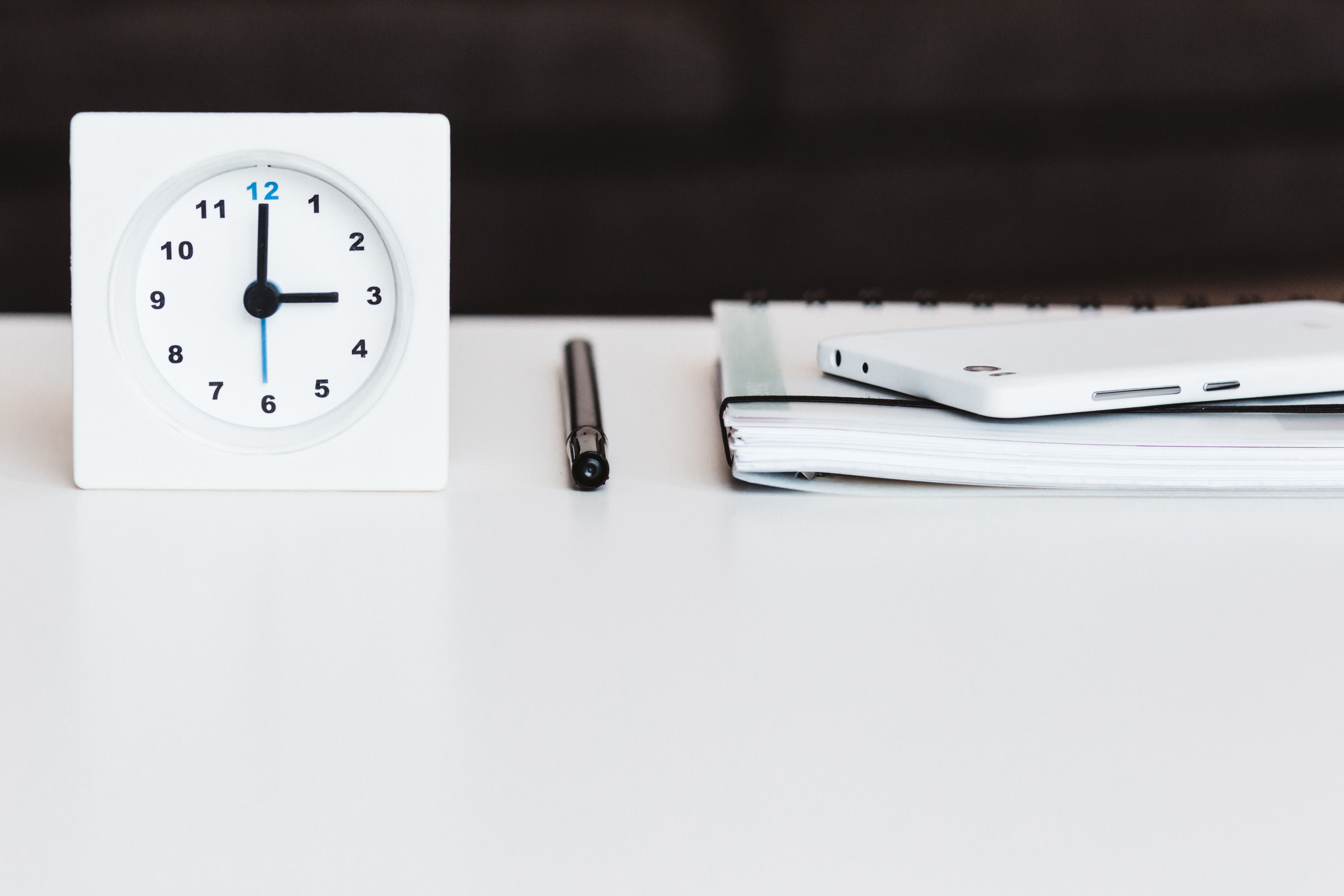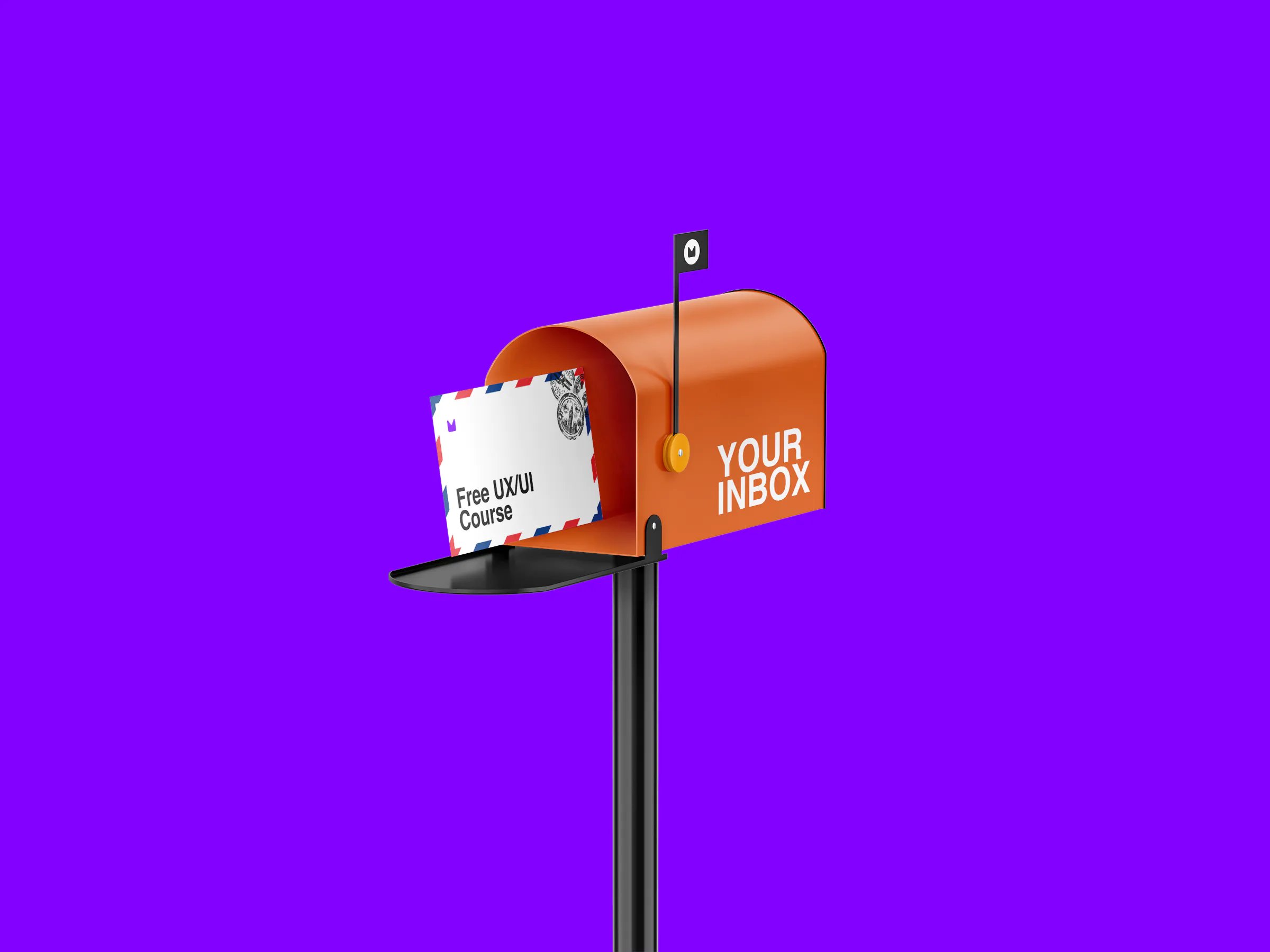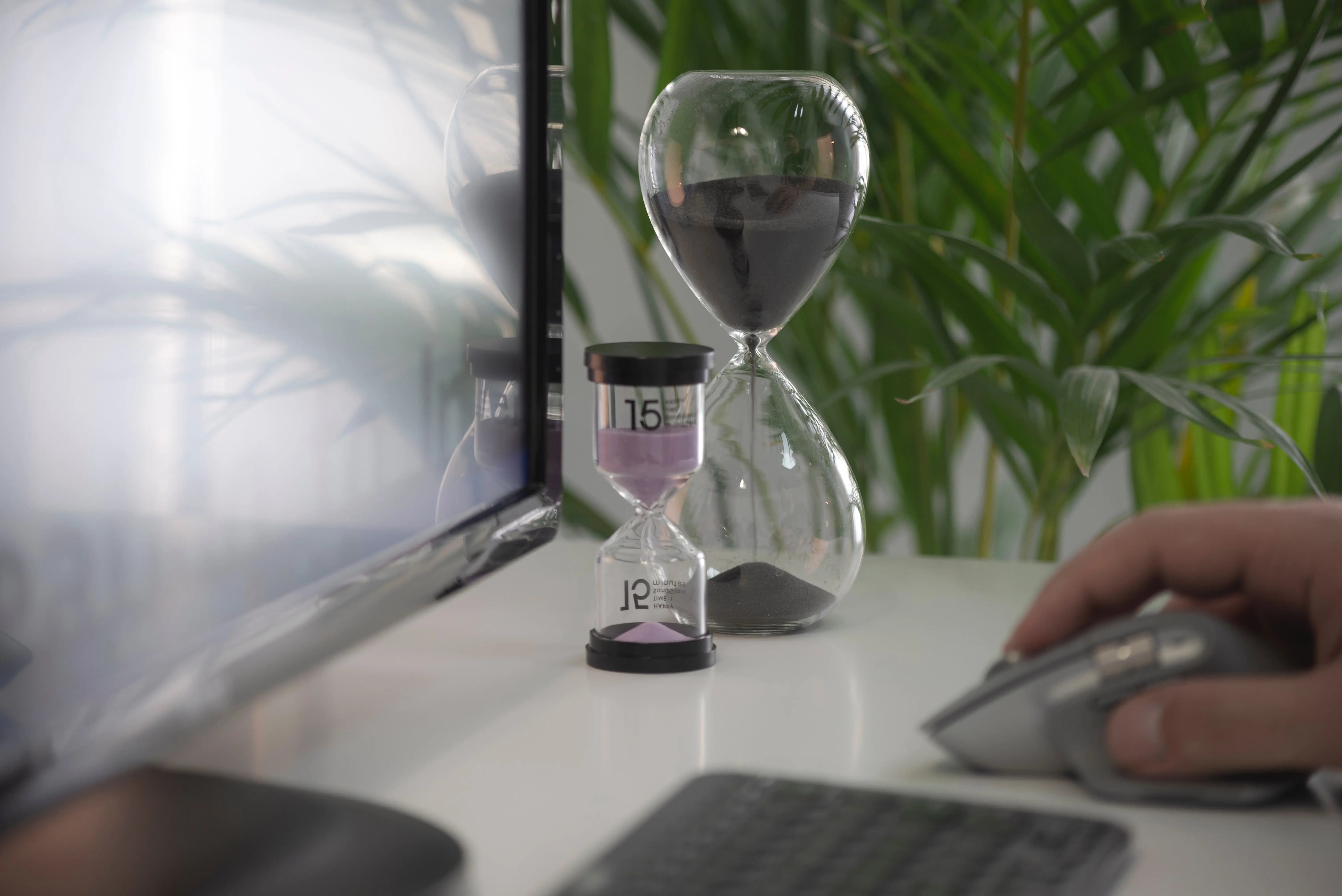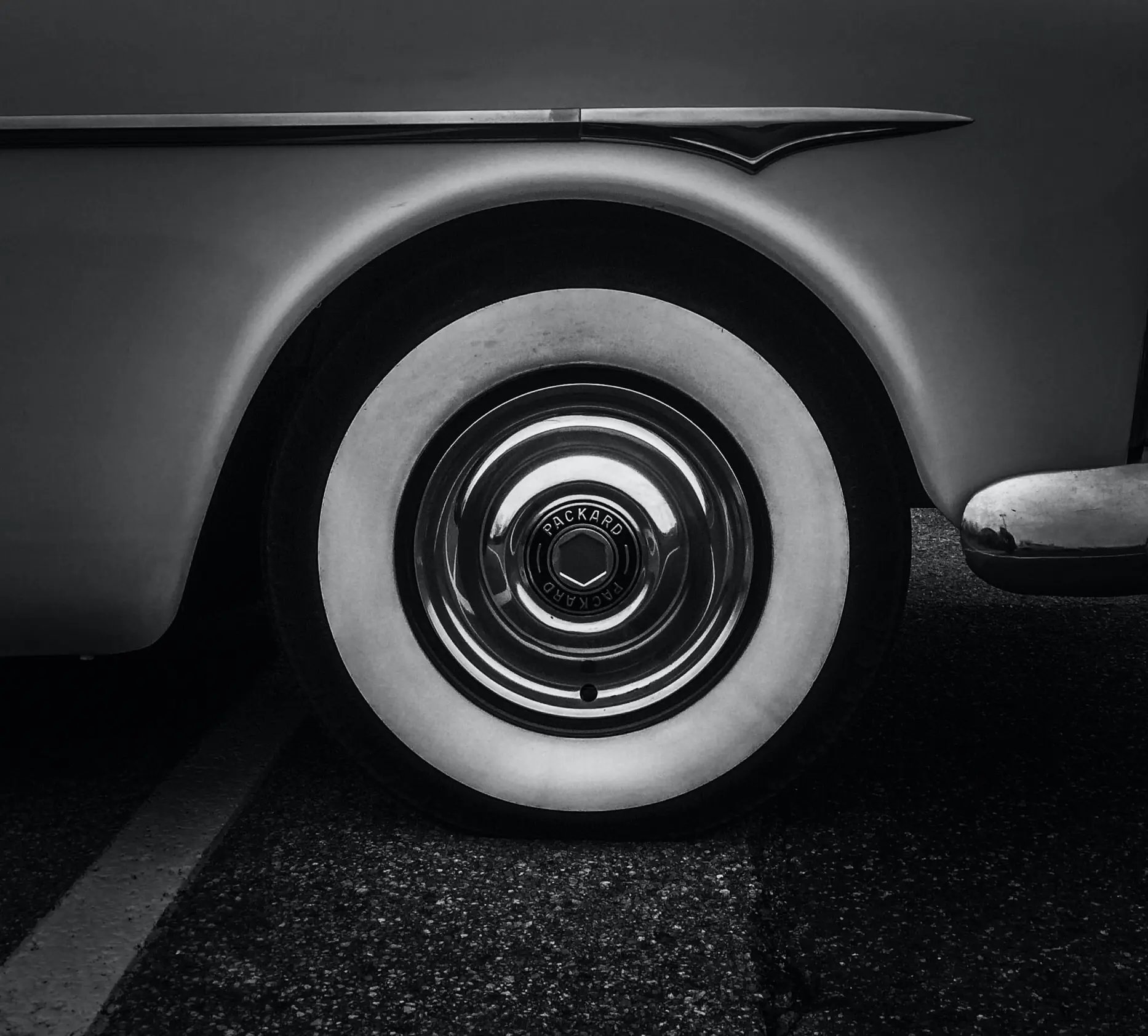

Get a Free UX/UI Course in Your Inbox Every Day for 15 Days
By the end of this three-week crash course, you'll have a much better understanding of the tech industry, the design craft, and all the knowledge you need to start building your career.

Get a Free UX/UI Course in Your Inbox Every Day for 15 Days
By the end of this three-week crash course, you'll have a much better understanding of the tech industry, the design craft, and all the knowledge you need to start building your career.

Whether you are transitioning to UX Design or are already a veteran, building an efficient workflow is essential for delivering high-quality work within tight deadlines. However, with so many distractions and things to manage, staying organized and maintaining a fast pace can be challenging. In this article, I’ll share some tips and tricks that can save you hours or even days when learning UX or looking for a way to optimize your workflow.
This is one of the most important tips, and it starts with a quote attributed to Abraham Lincoln: “If I only had an hour to chop down a tree, I would spend the first 45 minutes sharpening my axe.” Whether we are learning UX Design or playing piano, it’s best to sit down and gain a deeper understanding of the subject and be better equipped to tackle the challenges you will encounter as you learn. Before sitting down to work, check if you have the necessary tools, know what the goal is, and whether you need more context.
Preparation can help you develop a plan for how to learn a new skill or approach a new Product. This might include setting achievable goals and breaking the learning process into smaller, manageable steps. Having a clear plan in place will give you a roadmap for your journey, making it easier for you to stay focused and motivated.
Before I start writing content or detailing a Design flow, I make sure I do a small session (sometimes alone, sometimes with colleagues) to identify possible ways of going around it. Whether it’s a brainstorming session for an article topic or its structure, the agenda for a meeting, or gathering some app screenshots, I make sure I have a clearly defined goal in mind and as many tools as possible before sitting down to work. Having a roadmap will allow you to shift your focus to actually doing the work instead of looking around.
This brings me to one of my favorite concepts on time management and productivity, which I admit has an even odder name than my first tip.

Let’s clear out the concept first, shall we? Parkinson’s law states, “Work expands to fill the time available for its completion.”
When I started writing content, I spent a whole Sunday and, sometimes, even more thinking about a topic, researching, adjusting, and still not being dissatisfied with the result. That’s because the moment I woke up on Sunday, I would tell my brain: “Hey, your task today is to write this article.” A lot of time, right? If my brain were a college student, it would go to a party first, play WoW and then sit down to complete the task.
The story about how I stumbled upon this law is short and sweet. I was heading to Copenhagen for the weekend, forgetting to take any books or download content to entertain myself during the flight. While I was above the clouds, I thought: “Hey, why don’t I open my phone and start writing about a topic that’s been on my mind for months now?”and I did. As I landed, I had a complete draft, and upon publishing, it was one of my most successful articles. It took me 2 hours, which I would have otherwise spent looking out the window.
That’s because I had no distractions, I committed that time to it thoroughly and knew I wanted to finish before landing. I didn’t want to spend time writing instead of visiting the city, so I set myself this time during the flight. My brain got the message and was fully committed to focusing on that task; it felt the pressure of a deadline and limited time, and allocated all the power towards achieving that goal.
Jokes aside, after you’ve done your homework and you know what you need to do, set up a timeframe for completion. Start writing or creating and be present. Set a goal for yourself to finish in the allocated time.
The time needs to be realistic, depending on the task. If you set 1 day for a 2-hour task, you’re not taking advantage of this law. Similarly, if you set half an hour for something that would typically take 3 hours, you are setting yourself up for disappointment.
You can also plan for small 5 or 10 min breaks, and if you don’t finish everything within the allocated time, don’t leave the rest of the day (or the month for it). Set it up again, and make sure it’s realistic.

When it comes to streamlining your workflow, sometimes the best solution is right in front of you: taking advantage of existing work. And no, this is not a permission to copy but an encouragement to leverage collective wisdom. A lot of our time is spent jumping straight into less important details, delighters, and trying to create something innovative before examining (and learning from) what others have done before us. We often forget that the best and easiest way to do something creative is adopt and adapt tried-and-true techniques that have proven effective, allowing us to direct our efforts on something meaningful instead of wasting them looking to "show off."
By taking this approach, you can tap into the collective wisdom of the UX design community and avoid common pitfalls that others have faced before you. Whether it's a trick in Figma, an interaction pattern, adopting a particular method, or simply incorporating best practices into your workflow, you can build on the experiences of others to achieve your goals more quickly and efficiently.
If you want to design a booking app, there are plenty of successful products out there that you need to learn from. Instead of focusing on creating magic, a new flow, start from what the giants are doing, study the mechanisms behind it, master them and only then understand where the innovation puzzle piece needs to be placed. A great resource to check this is Mobbin.
Instead of starting to create every shape and element from scratch every time you tackle a new project, you should leverage existing resources and tools to streamline the process. Consider common app elements such as CTAs, headers, and prompts. These only need minor adjustments to align with the industry, brand, and purpose, but several aspects and rules are standard no matter what.

Perfectionism is a trap that many of us fall into when trying to be productive. It might seem like a good idea to strive for the best possible outcome, but it can have the opposite effect. Perfectionism can hold you back from making progress, as it creates a fear of failure that makes you hesitate to share your work with others. This fear of criticism and judgment can lead to self-doubt, causing you to overthink every little detail and become paralyzed by indecision.
While thinking and making informed decisions is a constant of our work, overthinking every single detail can ruin productivity. It keeps you stuck in the planning stage more than necessary and prevents you from taking action.
When it comes to UX design, progress can often be a slow and iterative process. But that doesn't mean you should hold back and wait for the perfect moment to show your work. You may never find that perfect opportunity.
Exposing your work to others early and often can be one of the best things you can do for your project. By sharing your work with others, you open yourself up to new ideas, perspectives, and feedback that can help you improve and advance faster.
We've all been there. We make a mistake, we receive feedback on it and instead of moving forward, we find ourselves stuck in a cycle of self-doubt and analysis, searching for excuses or explanations for what went wrong. But here's the thing: while it's important to be self-aware and reflect on our mistakes, constantly dwelling on the past can prevent us from making progress.
The key is to shift our focus from what went wrong to what we can do next. Instead of simply reflecting on the cause of the mistake, we should engage in a forward-thinking, solution-focused reflection process that allows us to evaluate our approach and make changes for the future. This means taking an honest look at what happened, learning from the experience, and using that knowledge to change your future approach.

So now you should better understand how to boost your productivity starting today. By incorporating these tips and tricks into your workflow, you can learn faster, streamline your processes, reduce stress, and focus on what matters.
Every little change you make to your workflow can significantly impact your work as a UX Designer while leaving you some time to spare. And remember, sometimes the easiest solution out there is to turn off notifications, roll up your sleeves, share your work, and set things in motion. Waiting on dwelling on perfection can do the opposite of what we aim for.